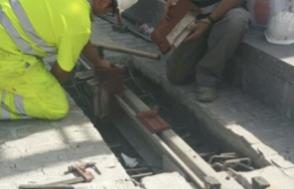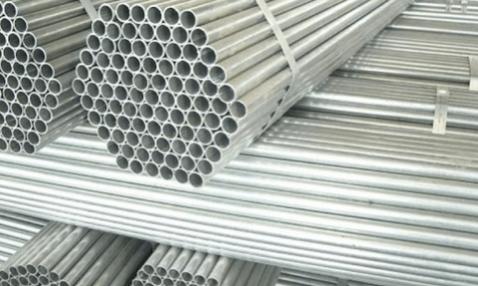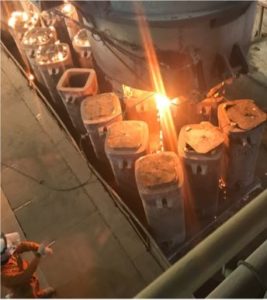SHARE
Open Innovation in the Steel Industry
One could think that the steel sector is very commoditized, where little innovation happens when it is actually the exact opposite. As a matter of fact, steel product manufacturers need to be constantly developing new products for their clients (e.g. in the construction or automotive industry) while staying cost-competitive. The companies working for the automotive sector have to undergo constant innovation to meet the challenges of this industry (e.g. improve safety and reduce energy consumption). Those companies in the construction sector also look for an improvement in steel materials, an increase in strength and durability or better protection against corrosion using nanotechnology, for example. Besides, these companies innovate by solving not only their cost-reduction challenges but also their sustainability ones, either by cutting down the water and energy use or improving the safety of their workers. Some of the most innovative trends in this field are related to the use of clean energies and the application of Industry 4.0. technologies. Here is a selection of 5 open innovation stories in which different companies from the steel sector have found or developed new technological solutions. These stories are proof that there is a great opportunity for innovation engineering in the steel industry for products and processes using open approaches such as crowdsourcing or startups calls.
Redefining the installation of tramway rails
 Traditionally, steel tramway rails were installed on top of a concrete foundation and fixed with screws and resin. The problem emerged every time there was a fault due to everyday use because the replacement of a damaged rail is very complex. In September 2016, ennomotive launched a challenge to find new ways to easily replace and maintain the tramway rails and, at the same time, reduce the noise and vibration typically associated with this transportation. 35 engineers from different countries took part in this challenge and the best ones were invited to submit a detailed design that proved the performance of their solutions. Piotr Januszkiewicz, from Poland, and Petar Smiljanić, from Serbia, were selected as the winners of this challenge. Our client, a leading steel product manufacturer, finally submitted the winning solution for a new patent. This story proves that there are industrial products that have not changed much over the years but can be a great innovation opportunity to achieve competitive advantages.
Traditionally, steel tramway rails were installed on top of a concrete foundation and fixed with screws and resin. The problem emerged every time there was a fault due to everyday use because the replacement of a damaged rail is very complex. In September 2016, ennomotive launched a challenge to find new ways to easily replace and maintain the tramway rails and, at the same time, reduce the noise and vibration typically associated with this transportation. 35 engineers from different countries took part in this challenge and the best ones were invited to submit a detailed design that proved the performance of their solutions. Piotr Januszkiewicz, from Poland, and Petar Smiljanić, from Serbia, were selected as the winners of this challenge. Our client, a leading steel product manufacturer, finally submitted the winning solution for a new patent. This story proves that there are industrial products that have not changed much over the years but can be a great innovation opportunity to achieve competitive advantages.
Water consumption optimization
 Water is used as a cooling fluid in steel manufacturing. For the last decades, with the development of environmental consciousness, the industrial processes are moving towards a more environmentally friendly production which leads to a reduction in water consumption. In August 2016, a global iron ore producer and supplier of steel products approached ennomotive to optimize one of their manufacturing plants located in South America. The challenge was to maximize the amount of water recovered from the cooling towers but also to find a way to keep the plant going even if the river dried out during the summer. After 4 months, 3 solutions from Spanish and Egyptian freelancers and an employee from Italy were awarded by the client. The winning solutions could recover up to 4,5 m3/h of the discharged water. Diverse technologies were assessed during this challenge, some traditional and some futuristic ones including, for instance, different kinds of heat exchangers, additional air-condensing modules, air-recirculation for bubbling, air exhaust, etc.
Water is used as a cooling fluid in steel manufacturing. For the last decades, with the development of environmental consciousness, the industrial processes are moving towards a more environmentally friendly production which leads to a reduction in water consumption. In August 2016, a global iron ore producer and supplier of steel products approached ennomotive to optimize one of their manufacturing plants located in South America. The challenge was to maximize the amount of water recovered from the cooling towers but also to find a way to keep the plant going even if the river dried out during the summer. After 4 months, 3 solutions from Spanish and Egyptian freelancers and an employee from Italy were awarded by the client. The winning solutions could recover up to 4,5 m3/h of the discharged water. Diverse technologies were assessed during this challenge, some traditional and some futuristic ones including, for instance, different kinds of heat exchangers, additional air-condensing modules, air-recirculation for bubbling, air exhaust, etc.
Smart automation solution for the packaging of steel tubes
 Steel manufacturers generally need to comply not only with product technical specifications but also with logistic requirements (e.g. packaging, labeling, etc.). These needs sometimes have an impact on the productivity of manufacturing operations. Our client, a steel product manufacturer located in the North of Spain, challenged us to find a solution to automate the packaging of steel tubes in its manufacturing plant. During the process of making hexagonal packages, the tubes used to accumulate and get intertwined before they were taken to the storage room and had to be separated and manually put inside a hexagonal package and strapped. The sought-for solution consisted of the design of an innovative but simple process and tools that formed hexagonal packages and strapped them with plastic foil or burlap. This solution came from Eduardo Puente one of the 47 engineers that participated in this challenge. The lesson learned was that although we think that the lean methodology is already implemented everywhere, the truth is that there are still medium-size companies that can do better and reduce their labor cost by introducing simple but smart solutions.
Steel manufacturers generally need to comply not only with product technical specifications but also with logistic requirements (e.g. packaging, labeling, etc.). These needs sometimes have an impact on the productivity of manufacturing operations. Our client, a steel product manufacturer located in the North of Spain, challenged us to find a solution to automate the packaging of steel tubes in its manufacturing plant. During the process of making hexagonal packages, the tubes used to accumulate and get intertwined before they were taken to the storage room and had to be separated and manually put inside a hexagonal package and strapped. The sought-for solution consisted of the design of an innovative but simple process and tools that formed hexagonal packages and strapped them with plastic foil or burlap. This solution came from Eduardo Puente one of the 47 engineers that participated in this challenge. The lesson learned was that although we think that the lean methodology is already implemented everywhere, the truth is that there are still medium-size companies that can do better and reduce their labor cost by introducing simple but smart solutions.
Smart quality control of laminated steel bars
 Industry 4.0 intends to change traditional factories into smart ones that can operate autonomously and even make efficient use of resources according to changing needs. For that purpose, many steel companies need to automate activities and processes that are still performed manually. Some of them are related to quality control activities at the end of the manufacturing process. In July 2017, Celsa, a leading European multinational in long steel products, wanted to automate the measurement of the straightness of laminated steel bars. A video showed how the activity was performed by the operators in the plant as well as the required specification of the dimensional control (profiles such as IPE 140, IPE 160…, tolerances, the layout of the plant). An ennomotive challenge was launched to find a solution that could continuously perform the control, avoiding the halts that caused a 3% productivity loss. One tricky aspect was the need to perform a 90º tipping to measure straightness, gather the information and generate alarms in case of non-conformity. 43 engineers participated in this challenge, which took two months. The final winners were a team formed by Rami Boutassghount and Justo Mercado, from Spain, who proposed a system based on electromagnets and laser.
Industry 4.0 intends to change traditional factories into smart ones that can operate autonomously and even make efficient use of resources according to changing needs. For that purpose, many steel companies need to automate activities and processes that are still performed manually. Some of them are related to quality control activities at the end of the manufacturing process. In July 2017, Celsa, a leading European multinational in long steel products, wanted to automate the measurement of the straightness of laminated steel bars. A video showed how the activity was performed by the operators in the plant as well as the required specification of the dimensional control (profiles such as IPE 140, IPE 160…, tolerances, the layout of the plant). An ennomotive challenge was launched to find a solution that could continuously perform the control, avoiding the halts that caused a 3% productivity loss. One tricky aspect was the need to perform a 90º tipping to measure straightness, gather the information and generate alarms in case of non-conformity. 43 engineers participated in this challenge, which took two months. The final winners were a team formed by Rami Boutassghount and Justo Mercado, from Spain, who proposed a system based on electromagnets and laser.
Productivity and safety improvement in a steel foundry
This is another Industry 4.0 challenge that aims to reduce safety risks and increase productivity in a steel foundry.  Back in March 2017, a stainless steel manufacturer was looking for an automatic or semi-automatic alignment system that placed the spoon of the foundry the sprue, thus eliminating any hazard for the operators. The challenge included pictures and a description of the process, which goes as follows: “A spoon is placed over a filling sprue in which the steel was poured down to fill up the ingot molds. This activity is intuitively performed by the crane operator. If the position is correct, the pouring can continue by opening the hole at the bottom of the spoon. However, if the spoon is wrongly placed, part of the casting will be poured out of the sprue and the spoon will need to be aligned again to complete the filling process.” 48 participants joined this challenge and the best solution came from a control process performed in a different industry. As a matter of fact, one of the critic points in the validation of this solution was its ability to work in a dusty environment with extremely high temperatures. This challenge proves that there are solutions in one industry that can be implemented in another sector with some minimal adjustments. Cross-industry innovation is highly valuable to attract existing solutions and reduce the risk of ‘reinventing the wheel’. If you want to know more about open innovation, read the information here or contact us.
Back in March 2017, a stainless steel manufacturer was looking for an automatic or semi-automatic alignment system that placed the spoon of the foundry the sprue, thus eliminating any hazard for the operators. The challenge included pictures and a description of the process, which goes as follows: “A spoon is placed over a filling sprue in which the steel was poured down to fill up the ingot molds. This activity is intuitively performed by the crane operator. If the position is correct, the pouring can continue by opening the hole at the bottom of the spoon. However, if the spoon is wrongly placed, part of the casting will be poured out of the sprue and the spoon will need to be aligned again to complete the filling process.” 48 participants joined this challenge and the best solution came from a control process performed in a different industry. As a matter of fact, one of the critic points in the validation of this solution was its ability to work in a dusty environment with extremely high temperatures. This challenge proves that there are solutions in one industry that can be implemented in another sector with some minimal adjustments. Cross-industry innovation is highly valuable to attract existing solutions and reduce the risk of ‘reinventing the wheel’. If you want to know more about open innovation, read the information here or contact us.
